Ancient civilization in Egypt contains many facts, some of which still remain a secret, and this great land along the banks of the Nile has featured in both modern and ancient history.
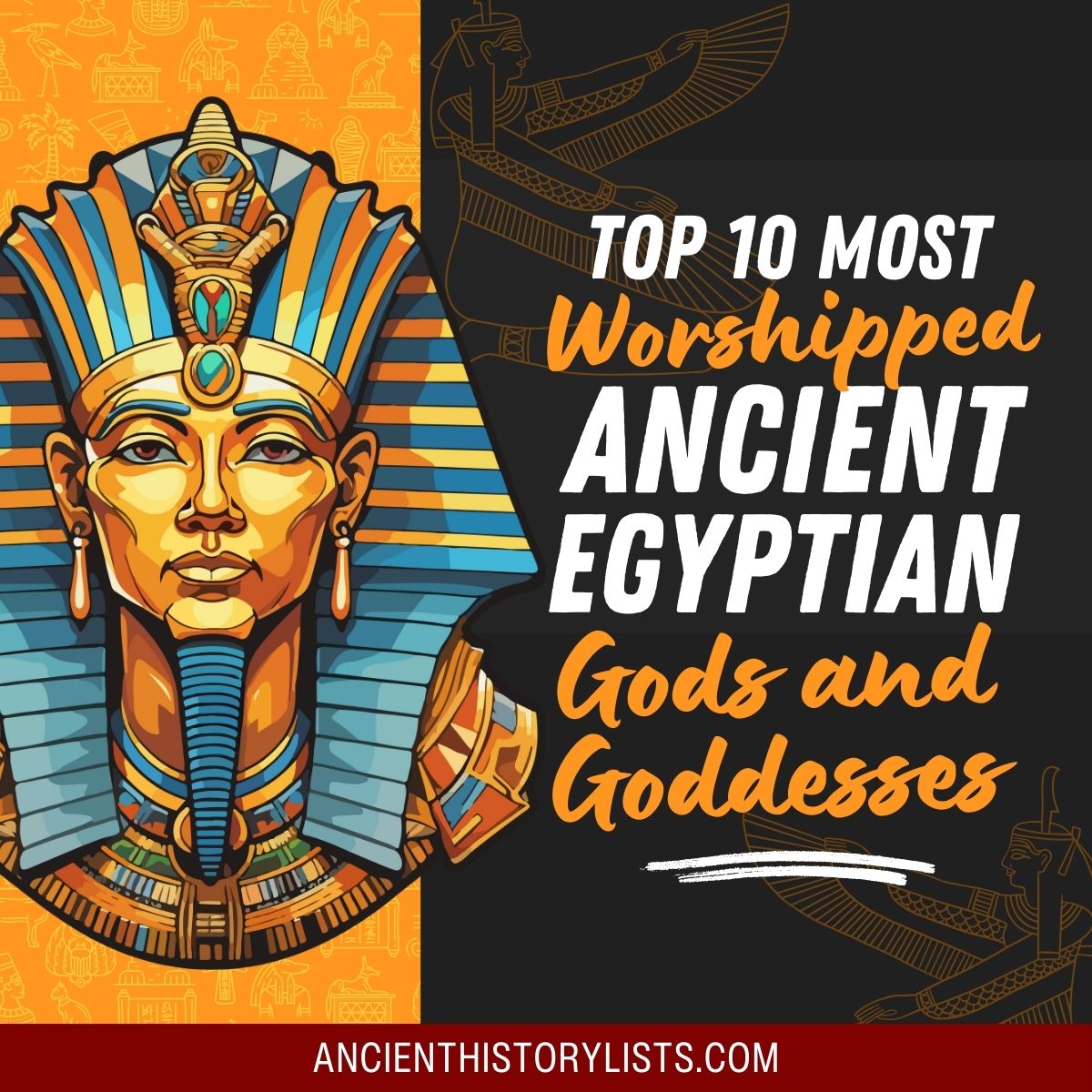
Around 3100 BC, after the political unification of Upper and Lower Egypt, the pharaoh was the supreme leader when it came to rituals and religion. Egyptian deities were considered to represent aspects of nature; the people revered them and did not want to anger them. So what forms did these deities take?
Let’s take a look at the top 10 most worshiped gods of ancient Egypt:
1. AMUN-RA: The Hidden One
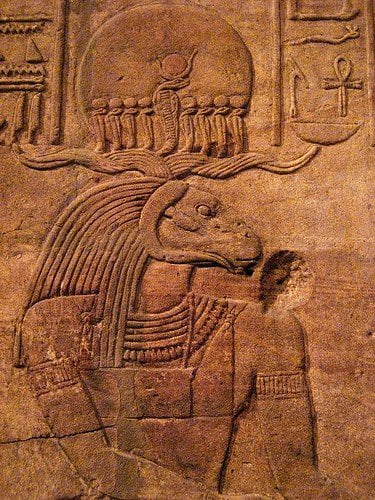
As Zeus was to the Greeks, the Egyptian god Amun-Ra or Amon was considered the king of the gods and goddesses. He became Amun-Ra after being amalgamated with the sun god Ra.
He was thought to be the father of the pharaohs, and his female counterpart, Amunet, was called the Female Hidden One. Forming the Theban Triad, Amun and Mut along with their son Khonsu, the moon god, were worshiped throughout ancient Egypt. Amun was not only worshiped in Egypt, but outside Egypt as well.
2. MUT: The Mother Goddess
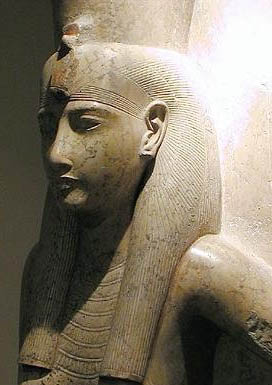
Mut means “mother” in Egyptian, and Mut is a primal deity who wears two crowns on her head, each representing Upper and Lower Egypt. Also titled “She who gives birth, but was herself not born of any,” Mut is represented as a vulture in hieroglyphs.
She is variously integrated with other deities and is often portrayed as a cat, cobra, cow and even a lioness. The mother of Khonsu, Mut and her different associations was worshiped by numerous different pharaohs.
3. OSIRIS: The King of the Living
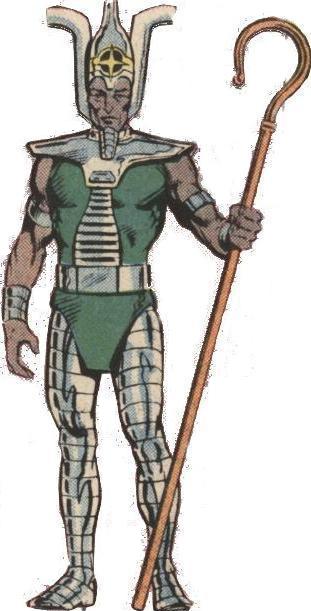
Considered the oldest child of the earth god Zeb and the sky goddess Nut, Osiris was worshiped as the god of the afterlife as the ancient Egyptians believed there was life after death. Often portrayed with green skin, Osiris was the god of vegetation which indicated renewal and growth and was thought to be responsible for the fertile flooding and vegetation around the banks of the Nile. Osiris married his own sister Isis and was murdered by his brother Seth.
Despite being murdered by his own brother, Osiris was brought back to life by the magic of Isis to conceive a child. Horus is the son of Osiris and Isis who avenged his father’s death and arose as a new pharoah of Egypt while Osiris became the god of the underworld and assisted in the afterlife of the pharaohs and the people.
4. ANUBIS: The Divine Embalmer
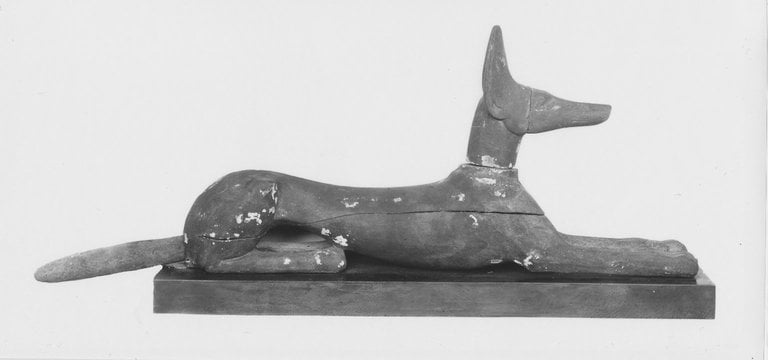
Before Osiris took over, Anubis patrolled the underworld. Anubis was a “psychopomp,” or deity who assists in the afterlife, and was the offspring of Ra and Nephthys. He was known for mummifying the dead and guiding their souls towards the afterlife.
His skin was black, symbolizing the dark Nile deposits which made the land so fertile. With the head of a jackal and the body of a man, Anubis also stood for renaissance and the staining of dead bodies after the embalming process.
5. RA: God of the Sun and Radiance
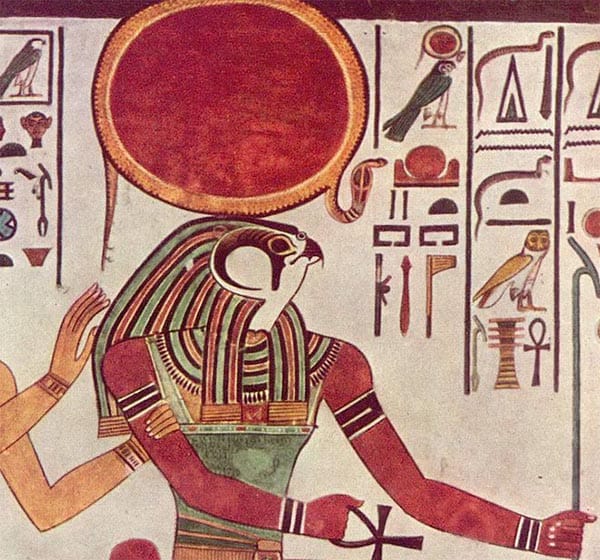
The midday sun, Ra or Re, is of great importance in Egyptian history. The god of the sun, Ra, has a sun disk around his head and is believed to have created this world. Every sunrise and sunset were seen as a process of renewal.
Portrayed as a falcon-headed god, he and Horus shared an association which led him to be known as the Horus of the Horizon. Many ancient Egyptian gods were merged with Ra and many were created by him such as rival gods like Ptah, Isis, and Apep.
See also:
6. HORUS: God of Vengeance
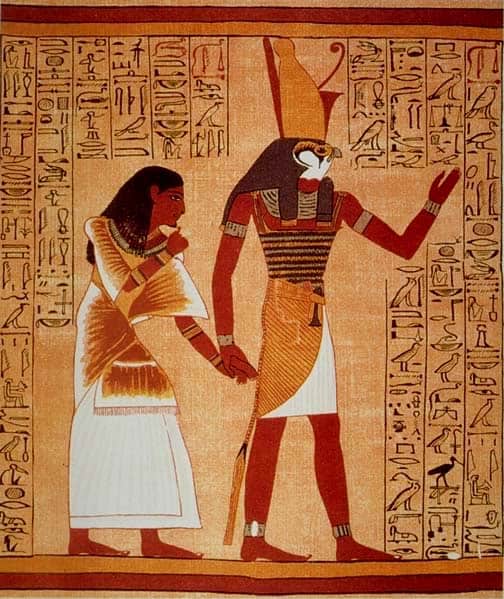
Horus had a special position in ancient Egypt. The child of Osiris and Isis, he avenged his father’s death and ruled Egypt. According to myth, he is also considered the child of Zeb and Nut, and this falcon-headed god with a crown of red and white was worshiped as the god of sky, war, protection, and light.
The Eye of Horus or the Wedjat Eye was personified as the goddess Wadjet and was popularly known as the Eye of the Ra. It symbolized that everything was being watched from above.
7. THOTH: God of Knowledge and Wisdom
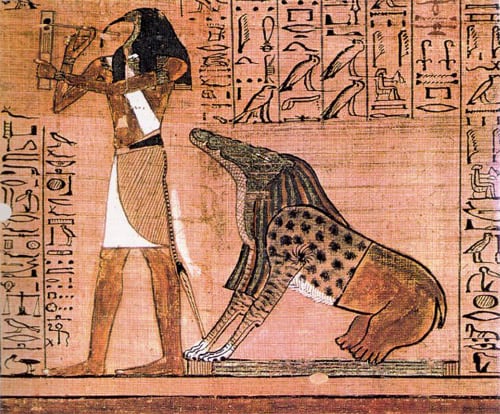
An arbitrator who settled the disputes between good and evil, Thoth is considered as a self-created god. Master of both physical and divine laws, along with his counterpart Ma’at, he maintained the universe by his mastery of calculations.
The ancient Egyptians acknowledged him as an author of science, philosophy, and magic. This ibis or baboon-headed deity was considered to be the most learned god in ancient history. Also regarded as the moon god for keeping count of time even when the sun was not there, Thoth is recognized as the one who created the 365-day calendar.
See also:
8. HATHOR: Goddess of Motherhood
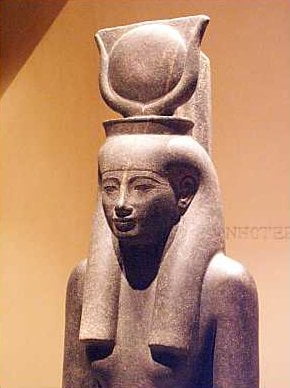
Sometimes called the Mistress of the West, Hathor welcomed the dead into the next life. Born of Ra, she exemplified motherhood and feminine love. The ancient Egyptians offered prayer to her as the goddess of music and dance.
She is believed to provide a blessing as the helper of women during pregnancy and childbirth. Affectionate, humble and kind to both the dead and living, she was also known as the Lady of Heaven, Earth and the Underworld.
9. SEKHMET: Goddess of War and Healing
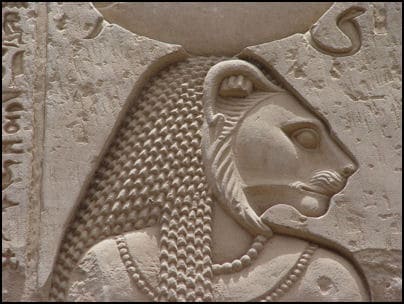
Leading and protecting the pharaohs during war, Sekhmet, the daughter of Ra, is depicted as a lioness and is known for her fierce character. She is also known as the Powerful One and is capable of destroying the enemies of her allies.
She is depicted with a solar disk and uraeus, an Egyptian cobra, which was associated with royalty and the divine. Sekhmet assisted the goddess Ma’at in the Judgement Hall of Osiris which also gained her the reputation of arbitrator.
10. GEB: God of Earth
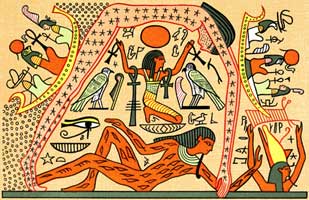
Also described as the Father of Snakes, Geb represented crops and healing. With a goose on his head, this bearded god was believed to have caused earthquakes whenever he laughed. He was the son of Shu (the god of air) and Tefnut (the goddess of moisture), and had an important role in the Book of the Dead as the one who weighs the heart of the dead in the Judgment Hall of Osiris. The ancient Egyptians believed that he retained the souls of the wicked.
Conclusion
In ancient Egypt, gods and goddesses were the depiction of all the fundamental necessities required for sustaining life. Many cults developed and many associations were made because of the interconnection between these life requirements. Put simply, anything that made life possible was represented by an ancient Egyptian god or goddess.
I thought Amun Ra and Ra were the same people? What about Ra’s three forms the Kheprea the beetle in the morning, Ra in the afternoon, and Atum the moose god in the evening?
never mind I just found out that Ra and Amun would merg together to form Amun-Ra
What about neith she she gave birth to the earth and a lot of gods/goddesses. She also is the goddess of war.
Amun Ra and Ra are mostly the same, Ra being the god of the sun and Amun being the actual sun disk. And yeah, Kheprea in the morning, Ra in the afternoon, and Knume in the evening. Ra created Kheprea and Knume when he was the only god in the world. Ra created them out of his lonelyness.
I just realised that my people (Maori) definitely came from Egypt. Because the word “rā” means “sun” or “day” in our language
Raki is sky, rakia sky in the middle east, taniwha is dragon, tanine is dragon wha is breath,
Raki, rakia = sky, taniwha tanine = dragon wha = breathing.
Amun literally translates into invisible or infinite
It is a personification of sun merging himself into space
Both together are space and star
A indefatigable union
They all emerged as one as the living God, Adonai, is singular but plural meaning lords of lord’s and king of kings. They all in the living god as one. God is several spirits, he is masculine definitely a man but has feminine spirits, take a look at the arc of the covenant the 2 angels like the 2 in the pyramid covers the arc of the ba of ra… People have no clue what they dealing with when it comes to the third coming of the trinity the three angles of the secret pyramid… Archeologists missed a whole lot and died for the disturbance of the prophecy. THE WORLD IS IN Jeopardy!!! It was written mind your business do not disturb this black pyramid…
I think that all these facts sre true indeed and it was a great help indeed. You see it has helped in my Ancient Egypt project inmy school .As I am a 9 year old the teachers have given us a 20 page task to be completed in 8 week and it’s not as easy as you think . So this website has been of great help and I am so very pleased. Just a thought but you could have added the sky goddess Nut and take away Hathor the goddess of mother hood . But other than that great website ! I recommend this a lot !
I learned that by comparing this list, all gods and goddesses of Egypt were conquered by the 10 plagues from the God of Moses and Aaron and the Israelites. Amen to the end of rule of Amun-Ra, ancient and always.
Yes, the MostHigh won. I am actually reading a book on wattpad right now about the battles and defeat of the Egyptian gods b
Actually these gods & goddesses never warred with the Israelites deity, this history predates Gideon & Judea history of Yahweh. These gods & goddesses were mere master builders of the attributes of royalty bestowed upon them. If you pay attention the title Pharoah was after the Golden dynasties. Notice how each Egyptian god or goddess took a place of laborer in Heaven not the Author of time, who they all paid respect to but never Named.
The multiplicity counterpart roles and relationships the deities of ancient Egypt transverse is very intricate. The Egyptians perceived life and the divine intricacies behind it in a outstandingl intricate and multi layered existence. The God’s all had various yet simultaneous relationships to each other and purposes served by them. Being so ancient a belief system evolving over many many centuries that is today lost in concept and practice we can only connect educated dots so to speak where much is concerned.
I thought that Horus was the god of the pharaoh. Also, where is Isis?
no pharaoh is basically the living Horus, Horus fought seth i believe for egypt, he won and owns egypt. plz correct me if i’m wrong
No I pretty sure thats the way it went i might be wrong but that is pretty much what I’ve read everywhere so yeah
So what happened is basically this;
Ra/Amun-ra depending on the period we’re talking about was the first pharaoh of the Gods, as he aged he heard a prophecy that a child of the sky goddess Nut and the earth god Geb would succeed him. Unwilling to relinquish the position he ordered the god of the wind Shu, Nuts father to separate the lovers Nut and Geb however Nut was already pregnant. Thus Ra forbade her birth her children on any day of the year to protect his position.
To combat this Nut gambled with the moon god Khonsu to procure enough moonlight to create the last five days of our current year (according to myth there was once only 360 days to the year). She birthed each of her five children on one of these days her children were Osiris, Set, Isis, Nepthys, and Horus. Isis married her brother Osiris and Set his sister Nepthys, these relationships will be important later on. Isis poisons Ra with the venom of a snake mixed with Ra’s own saliva to form a ‘super toxin’ that causes Ra to become extremely ill, Isis feigns concern and as the goddess of magic ‘stumbles’ upon a cure to Ra’s affliction. To be cured Ra gives Isis his true name, which in turn gives Isis control over his very being. Isis cures Ra but forces him into retirement with her new power over him, placing Osiris on the throne to become the new pharaoh fulfilling the prophecy that first caused Ra concern.
Osiris’s dynasty was prosperous, many gods appreciating a new younger pharaoh however Osiris’s brother Set was discontent. He plotted to overthrow his brother by laying an intricate plot, he brought an enchanted sarcophagus to present to Osiris as a gift saying it would mould itself only to fit the true pharaoh. Many gods tried to fit in out of sport to test the claim and none fit properly into it, when Osiris tried it he fit just as Set had proclaimed however Set’s lackeys and allies secured the lid to the sarcophagus before Osiris could exit and sent him off to an unknown corner of Egypt. Set then claimed the throne as it’s next heir, becoming a tyrannical pharaoh.
After this point the story has a few inconsistencies, Isis is either pregnant before Osiris is trapped or falls upon his phallus later in despair. Whatever the case though she births her brother and son Horus ‘the avenger’ (Egyptian pharaonic lineages are confusing, the gods sometimes even more so)
Here I’m going to skip a lot of details, we’re discussing the pharaoh of the gods not how they were raised.
Horus avenges his father/brother by killing his uncle/brother and then assumes the position of pharaoh himself supported by his mother/sister Isis. Osiris in turn becomes the pharaoh of the deceased ruling the afterlife just as Horus rules the realm of the living.
I’m a fan of Wadjet, that’s a goddess associated with the Cobra, protector of Egypt and even protector of Ra at times, linked to the Eye of Ra, as she nested on his crown, and in that role went from spiting venom into the eyes of her enemies to spiting fire instead. She had become so revered at times she was considered one and the same as MUT, second on the list. I am not exactly sure if it was referring to her or Apep but I seen a quote say “To be respected but never trusted” given Wadjet is considered extremely good I guess I mistook it for a comment about Apep, who is a major snake or serpent antagonist of Ra.
Either way, I think she is cool.
What about Isis? Goddess of motherhood and love.
I would like to point out that Hathor and Sekhmet are one and the same, just different aspects of the same being.
The myth goes that the people complained to Ra that Sekhmet who loved violence and whose main task was to crush Ra’s enemies and would often ‘drink the blood of Ra’s enemies’, was instead slaughtering both those of good and evil (worship/do not worship Ra) alignment in Egypt. They pled for Ra to restrain her however he did not have the strength to restrain her directly whilst still maintaining his duties. Still he couldn’t let the people that worshipped him to continue to suffer, thus he had them present Sekhmet with barrels of wine dyed or naturally red and had the people tell Sekhmet that it was the blood of Ra’s enemies. Delighted by the chance to guzzle more of Ra’s enemies blood Sekhmet drank/skulled the wine and grew so drunk she fell asleep.
As she slept Ra transformed her into a goddess with attributes the exact opposite of her previous self, her love of war changed to love of life, her destructive tendencies changed to protective ones, etc.
Ra maintained the ability to awaken Sekhmet in times of war, however she remained as Hathor the majority of the time due to her uncontrollable nature as Sekhmet.
Now I’ll admit that I’ve greatly summarised this myth, however that doesn’t change my justification for my point above. Hathor and Sekhmet are two aspects of the same deity, just as Kephri is an aspect of Ra. Although Ra was the main aspect worshipped and both Sekhmet and Hathor were worshipped to a great extent, they should still at least have given a nod to this fact of the goddesses duality even if they placed her two personalities into separate slots.
I think the only two faced deity that can be given a single slot with such duality is Janus
Is Horus the grandson of Ra yes or no ? And is Anubis and Horus brothers yes or no ?
Yes Horus is Ra’s grandson, and Anubis is Horus’s uncle. (He is Ra’s son)
Depends. Horus and Anubis are typically half brothers (both fathered by Osiris). In some myths from the Old Kingdom, Horus is instead Ra’s son. Pharaohs would have legitimized their rule by being the “living Horus”, heir to Ra.
Many similarity with Indian God’s and goddess.. God mother Mat.. In India.. Depending on language.. Calling different names of mother God.. Like Matha, Amma, Amman, etc.. And mother God is assisting Lion also..
Other God.. Sun, Moon, air, fire, sky water, etc.. Also similar.. Only the Name and smaller changes are there because of language geographical change..
Indian calling “Sanadana dharma” (external duty) is following around worldwide based on geographical atmosphere.. Nature and elements are considered God’s.. Etc.. Energy sources in the universe are treated as God’s..
Rights way of living with many engineering, medical and architectural worlds..
I feel like a few of these gods are similar to the bible stories. Is this true?
Susan,Who ever taught the the biblical story of the ten plagues ,must have misinterpreted it…
The ten plagues were curses that the God of the Israelites placed on Egypt each time that Ramses harded his heart& refused to set the Israelites free from captivity…
This had nothing to do with overthrowing the Egyptian Gods
God of Israelite send those ten plague to prove that he is the Almighty…those ten plague is related to these Egyptian God’s
i think ra might be the strongest (except for amun ra) because ra created the earth therefor he created the other gods case closed
Why is there nothing written about Anibis mother Goddess i have read only in the encyclopedia of World Religions
what about anuke and anuket? anuke: ancient goddess of war, and is lesser known; Anuket: river goddess of the nile!!
Many ancient egyptian gods were merged with ra and many were created by him such as rival goods like path Isis and Apep
The mythology varies based on what city you’re in. In Iunu (Heliopolis), Atum or Ra was the creator of the world, with Shu, Tefnut and the other Ennead gods. In Memphis, Ptah created everything by speaking its secret name. In Hermopolis Magna, the 8 ogdad gods created the world.